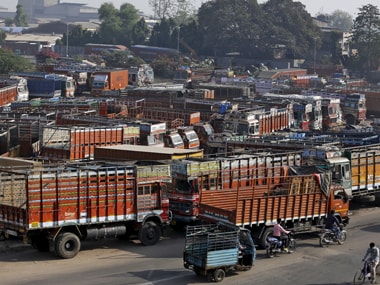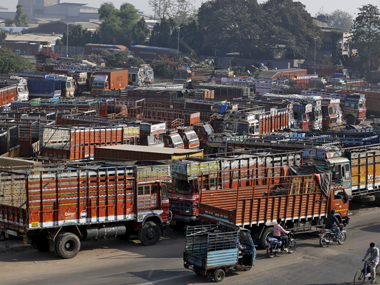Going by the four-slab rate structure finalized by the Goods and Services Tax council on Thursday, one can safely forget about the long talked about idea of transition to a ‘uniform tax structure’ or a ‘one nation, one tax’ regime, at least in the foreseeable future. A GST structure with rates of 5 percent, 12 percent, 18 percent and 28 percent, additional cess over the peak rate and the requirement of multiple registrations in each state for the supply of goods and services would implicitly mean that the complexity of the tax regime is here to stay. In other words, this is a significant dilution from the original idea of a historic indirect tax reform to a single rate. Instead of dealing with two main tax slabs for goods (5 percent and 12.5 percent), the industry will now have to deal with three rates 5, 12 and 18 percent. [caption id=“attachment_2940664” align=“alignleft” width=“380”]  Reuters[/caption] But, there wasn’t much the Narendra Modi government or the GST council could do about it. At this stage, this is the only structure that could generate the political consensus and agreement among states. It is good to begin the reform with some inefficiency that could be rectified later, rather than indefinitely delaying the reform. What it entails The four-slab structure announced yesterday (Thursday) envisages accommodating most essential items and mass consumption items in the 0-5 percent bracket. Union Finance Minister Arun Jaitley said this chunk would take care of 50 percent of the consumer price index basket. Food grain is likely to be exempted. This partly addresses the big worry of the Reserve Bank of India that the GST rollout will erase the hard-won gains on CPI inflation over the last 2-3 years. There are two standard rates set – 12 percent and 18 percent. In most likelihood, 18 percent is likely to be the key GST rate that will accommodate most goods and services. Eventually, there is a likelihood that these two rates will be converged closer to the 18 percent band. Some of the goods which are currently taxed at 28 percent will be brought into the 18 percent slab and certain items such as ‘white goods’ that are currently taxed at 30-31 percent and soaps, oils and shaving kits will be moved to the 28 percent slab. One of the major contentious points is the cess that will be applied above the peak rate of 28 percent for luxury and demerit goods. Primarily these are aerated drinks, pan masala, tobacco and luxury cars. The final incidence of tax on these items will remain the same since the cess will be calculated above 28 percent to match the existing rate (40 percent for all except tobacco, which is taxed at 65 percent). But, imposing cess over the GST rate is a major departure from the original concept. Jaitley has a good rationale for generating the amount to compensate the states from the cess rather than direct tax collection. “If the compensation is to be made through tax collection, the cascading effect will be Rs 1.72 lakh crore, because out of that 50 percent will go to the states and 50 percent to the Centre. Then, out of the Centre’s share, 42 percent would go to the states, along with compensation. So, paying it out of tax will be a huge burden on taxpayers. So, we decided against that," the FM told reporters at a presser. Grey area The bigger task for the GST council is now allocation of specific goods in each tax bracket. This will be done by a committee of secretaries. The common man would then come to know where he will have to pay more and where his tax burden is coming down. As of now, there is considerable uncertainty on what kind of changes will come in the tax rates of specific goods and services. Hence, the next big thing to watch out for is the classification of items into different tax brackets. The GST council didn’t really have many options in hand to fix a single tax rate. In a vast country like India, which is geographically and economically diverse, it isn’t easy to arrive at one single rate unlike some of the developed countries which are smaller in size. But, eventually, some of these slabs can be merged with a lower band. The GST council meeting will continue today (Friday) as well and discuss about the issue of dual control. If there is consensus emerging there too, the GST rollout will be a bigger possibility on 1 April as scheduled. Two key legislation—Central and Integrated GST Bills—would likely come up in the Winter Session, paving way for the final rollout. The big picture The benefits of having even a four-slab structure outweigh the inadequacies. The cascading impacts on taxes on many items will disappear, tax compliances will increase since every transaction will be recorded at every stage by the GST infrastructure. Foreign investors will be more comfortable to look at India with a simplified tax structure. The myriad state levies such as entry taxes and octroi will vanish. The common man stands to gain with essential items which will either be excluded from the GST or accommodated in the 0-5 percent bracket. Corporations will have to wait for the final list of classification to know the actual impact on their finances. What is critical to watch is how effectively the new system can encourage compliance of indirect tax payers. The reason being that the whole compensation formula works on collection of cess in the initial five years. If the tax collections do not pick up as expected, then the government will face a crisis, notwithstanding the gains of GST for the economy (expected 1-2 percent jump in GDP over the long-term). But, the point is that the GST council also had to address the political compulsions of various states and parties while deciding the structure. Seeing in this context, the council has come up with a decent structure to begin with. Though the agreed GST rate structure has deviated significantly from the idea of a one nation, one tax, the currently agreed structure is good enough for India to start with. The common man stands to gain most.
The GST council also had to address the political compulsions of various states and parties while deciding the structure.
Advertisement
End of Article


)

)
)
)
)
)
)
)
)



